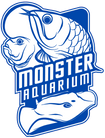The wild type axolotl refers to the natural, or "wild," coloration of the Mexican axolotl (Ambystoma mexicanum). It is the original and most common color morph found in the species. Wild type axolotls have a distinctive appearance characterized by dark speckles or blotches on a lighter background color.
Here are some key features and characteristics of wild type axolotls:
-
Coloration: Wild type axolotls have a predominantly dark-colored body with lighter speckles or blotches. The background color can vary from grayish-brown to olive-green, while the speckles are typically darker brown or black. The color pattern helps them blend into their natural habitat, such as murky waters with vegetation and detritus.
-
Size and Shape: Axolotls are generally small, with adult lengths typically ranging from 6 to 12 inches (15 to 30 centimeters). They have a long, slender body, a flat head, and external gills on either side of their head. Their limbs are short and stubby, with delicate digits.
-
Aquatic Lifestyle: Axolotls are fully aquatic and remain in their larval form throughout their lives, a phenomenon known as neoteny. They have retained their juvenile characteristics, including external gills and the ability to breathe through them. This aquatic adaptation allows them to navigate and hunt for prey effectively.
-
Temperament: Wild type axolotls are generally docile and peaceful creatures, making them popular pets and display animals. They are not known for aggressive behaviors towards other tank mates. However, it's important to note that axolotls have voracious appetites and may try to eat smaller tank mates that can fit into their mouths.
-
Tank Requirements: Providing suitable tank conditions is crucial for the well-being of wild type axolotls. They require a spacious aquarium with a minimum capacity of 20 gallons (75 liters) for a single axolotl, with additional space for each additional axolotl. A cool temperature between 60-68°F (15-20°C) should be maintained, along with proper filtration and regular water changes to keep the water clean and well-oxygenated.
-
Feeding: Wild type axolotls are carnivorous and primarily feed on small aquatic invertebrates, worms, insects, and small fish in their natural habitat. In captivity, they can be fed a variety of live or frozen foods, including bloodworms, blackworms, earthworms, brine shrimp, and small feeder fish. Providing a varied diet ensures they receive adequate nutrition.
Wild type axolotls are a classic representation of the species and are widely appreciated for their natural beauty. Their distinctive coloration and unique characteristics make them a popular choice among axolotl enthusiasts and collectors. With proper care and a suitable environment, wild type axolotls can thrive and provide captivating displays in home aquariums or educational settings.
| Size |
3-4”, 5-6” |
|---|




